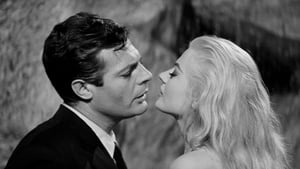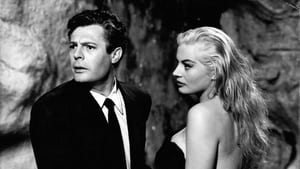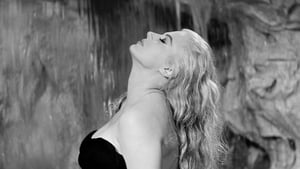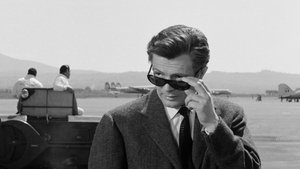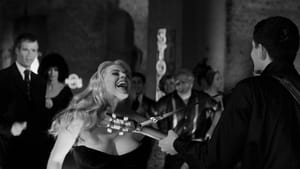Contact: info@alwanfilm.com
Video Sources 0 Views
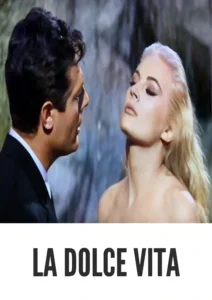
Synopsis
Capturing La Dolce Vita 1960 Colorized: Reviewing the Colorized Classic of 1960

Introduction
In 1960, Federico Fellini crafted a cinematic masterpiece that captured the essence of Italian society in the post-war era. La Dolce Vita 1960, with its iconic scenes and memorable characters, continues to enchant audiences to this day. Now, with the release of an early colored version, viewers have the opportunity to experience Fellini’s vision in a new light. In this article, we delve into the significance of La Dolce Vita 1960’s early colored version and its impact on the world of cinema.
Check The Full Colorized Movies List
Check Our Colorized Movies Trailer Channel
Understanding La Dolce Vita 1960 Colorized: Director, Cast, and Genre
Directed by Federico Fellini, La Dolce Vita 1960 stars Marcello Mastroianni, Anita Ekberg, and Anouk Aimée in pivotal roles. Fellini’s vision for the film transcends traditional genre boundaries, blending elements of drama, comedy, and social commentary to create a cinematic experience unlike any other. La Dolce Vita 1960 is a poignant exploration of existential angst, moral decay, and the pursuit of pleasure in a rapidly changing world.
Exploring the World of La Dolce Vita 1960 Colorized: Plot and Characters
Set in Rome, La Dolce Vita 1960 follows the exploits of Marcello Rubini, a disillusioned journalist navigating the decadent nightlife of the city. Over the course of seven nights and seven dawns, Marcello encounters a cast of eccentric characters, including the glamorous actress Sylvia, the enigmatic Maddalena, and the elusive intellectual Steiner. As Marcello grapples with his own identity and desires, he finds himself drawn deeper into a world of hedonism and despair.
At its core, La Dolce Vita 1960 is a character study of Marcello Rubini, portrayed with depth and complexity by Marcello Mastroianni. Mastroianni’s performance captures the inner turmoil and emotional conflict of a man torn between his aspirations and his reality. Anita Ekberg shines as Sylvia, the quintessential symbol of Hollywood glamour, while Anouk Aimée delivers a nuanced portrayal of Marcello’s love interest, Maddalena. Together, the cast brings Fellini’s vision to life with passion and authenticity.
The Art of Film Colorization
Film colorization, the process of adding color to black and white footage, has long been a subject of debate in the world of cinema. While some view colorization as a means of modernizing classic films and appealing to contemporary audiences, others argue that it detracts from the director’s original vision and diminishes the artistic integrity of the work. The release of La Dolce Vita 1960 in a colorized format offers a unique opportunity to explore the impact of colorization on a beloved classic.
Early Colored Films: A Brief History
The emergence of early colored techniques in cinema marked a significant milestone in the history of filmmaking. From hand-tinted frames to two-strip Technicolor, early colored films paved the way for the vibrant visuals and immersive experiences that define modern cinema. The decision to colorize La Dolce Vita 1960 reflects a broader trend in the industry towards reimagining classic films for contemporary audiences.
La Dolce Vita 1960 and Its Early Colored Version
The release of La Dolce Vita 1960 in a colorized format represents a departure from its original black and white aesthetic. While purists may lament the change, others welcome the opportunity to experience Fellini’s masterpiece in a new way. Colorization adds a layer of visual richness to La Dolce Vita 1960, enhancing its evocative imagery and timeless allure. From the sun-drenched streets of Rome to the glittering lights of the Via Veneto, colorization breathes new life into Fellini’s meticulously crafted world, inviting audiences to rediscover the film’s magic in vibrant detail.
The Debate Over Film Colorization
The debate over film colorization remains contentious, with passionate arguments on both sides of the issue. While proponents argue that colorization preserves classic films for future generations and introduces them to new audiences, opponents contend that it compromises the director’s original vision and undermines the cultural significance of the work. The release of La Dolce Vita 1960 in a colorized format reignites this debate, prompting audiences to reconsider the value of colorization in the context of cinematic history.
Examining La Dolce Vita 1960 as an Early Colored Film
As one of the earliest examples of colorization in cinema, La Dolce Vita 1960 offers valuable insights into the evolving relationship between black and white and color imagery. While purists may prefer the film in its original monochromatic form, there is no denying the visual impact of its early colored version. Colorization enhances the emotional depth and narrative richness of La Dolce Vita 1960, elevating its themes of love, longing, and existential crisis to new heights. From the vibrant hues of a Roman sunset to the subtle nuances of facial expressions, colorization adds a layer of intimacy and immediacy to Fellini’s masterwork, drawing audiences into its world with unparalleled intensity.
Influence and Legacy: La Dolce Vita 1960 Colorized’s Impact on Cinema
La Dolce Vita 1960 has left an indelible mark on the cinematic landscape, inspiring generations of filmmakers with its bold storytelling and innovative visual style. Fellini’s influence can be seen in the works of directors such as Martin Scorsese, Woody Allen, and Pedro Almodóvar, who have drawn inspiration from his groundbreaking approach to storytelling and character development. The release of La Dolce Vita 1960 in a colorized format introduces a new generation of viewers to Fellini’s genius, ensuring that his legacy will endure for years to come.
Director’s Cinematic Legacy: Beyond La Dolce Vita 1960 Colorized
Federico Fellini’s legacy extends far beyond La Dolce Vita 1960, encompassing a diverse body of work that spans multiple genres and styles. From the surreal landscapes of “8½” to the whimsical charm of “Amarcord,” Fellini’s films continue to captivate audiences with their wit, imagination, and emotional depth. The release of La Dolce Vita 1960 in a colorized format serves as a testament to Fellini’s enduring influence on the world of cinema, reaffirming his status as one of the greatest filmmakers of all time.
Themes Explored in La Dolce Vita 1960 Colorized
La Dolce Vita 1960 explores a range of themes, from the pursuit of pleasure and the meaning of success to the emptiness of fame and the fragility of human connection. Fellini’s depiction of Marcello’s existential journey resonates with audiences on a deeply personal level, offering a poignant meditation on the nature of desire and disillusionment. The film’s exploration of love, loss, and the search for meaning in a world of excess continues to resonate with viewers, transcending cultural and temporal boundaries.
Reception and Controversy Surrounding La Dolce Vita 1960 Colorized
Upon its release, La Dolce Vita 1960 received widespread critical acclaim, earning the prestigious Palme d’Or at the Cannes Film Festival and garnering international praise for its bold storytelling and innovative visuals. Audiences were captivated by Fellini’s audacious approach to filmmaking, which challenged conventions and pushed the boundaries of cinematic expression. The release of La Dolce Vita 1960 in a colorized format reignites the debate over film colorization, prompting audiences to reconsider the value of preserving classic films in their original form.
Where to Watch La Dolce Vita 1960 Colorized Online
For those eager to experience the magic of La Dolce Vita 1960, the film is readily available on popular streaming platforms such as Netflix, Amazon Prime, and Hulu. Whether viewed in its original black and white format or its early colored version, La Dolce Vita 1960 promises to captivate audiences with its timeless beauty and provocative storytelling.
FAQs About La Dolce Vita 1960 Colorized
- Is La Dolce Vita 1960 based on a true story? No, La Dolce Vita 1960 is a work of fiction, though it draws inspiration from real-life events and experiences.
- Who are the main actors in La Dolce Vita 1960? The film stars Marcello Mastroianni as Marcello Rubini, Anita Ekberg as Sylvia, and Anouk Aimée as Maddalena.
- What is the controversy surrounding the colorization of La Dolce Vita 1960? Some argue that colorization compromises the director’s original vision and diminishes the artistic integrity of the work, while others see it as a legitimate means of updating classic films for modern audiences.
Conclusion
In conclusion, La Dolce Vita 1960 remains a timeless masterpiece that continues to captivate audiences with its evocative imagery and provocative storytelling. Whether viewed in its original black and white format or its early colored version, the film offers a profound meditation on the nature of desire, disillusionment, and the pursuit of happiness. As we continue to debate the merits of film colorization, one thing remains clear: the enduring legacy of La Dolce Vita 1960 will continue to inspire and provoke audiences for generations to come.
